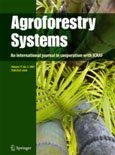We test the applicability of two different methods for quantifying carbon (C) stocks in five tropical peat sites in Sumatra, Indonesia; two in an intact peat swamp forest, one in a logged forest and two in an oil palm plantation. Elemental analysis is used to quantify C contents and stocks in all samples, and is the standard to which the two methods are compared. The first method, loss on ignition (LoI), underestimates sample C stocks by 4.9 ± 0.8% compared to results from the elemental analysis across all samples. Loss on ignition is applied to three full peat cores in one of the intact forest sites and one oil palm site, using the standard factor of 1.922 to convert the organic matter (OM) result into C content. Evaluation against independent data suggests that a factor of 1.878 would be more appropriate. The second method, using the equation presented in Warren et al. (2012) for quantifying C density in peat swamp forest soils, shows no significant difference between the equation and elemental analysis derived results for the intact and logged forest sites. We suggest the use of a bulk density (BD) range to further define the limits of the equation. When applied to samples from oil palm sites, there was a significant difference in the results provided by the Warren equation and elemental analysis. Evaluation against independent data suggests that, in this land use, C density (kg C m- 3) is more accurately estimated by the equation Cd = (515.44 × BD) + 3.01 (R2 = 0.94). We also present a variable factor for the conversion of the organic matter (OM) to C content by merging the two methods. We recommend the use of the LoI method with the improved factor for conversion of OM to C content, or where bulk density is known the Warren equation for calculating accurate C density values across intact and logged forests on Indonesian peats, and our revised equation for oil palm sites
DOI:
https://doi.org/10.1016/j.geoderma.2013.09.013
Altmetric score:
Dimensions Citation Count:

Publication year
2013
Authors
Farmer, J.; Matthews, R.; Smith, P.; Langan, C.; Hergoualc'h, K.; Verchot, L.V.; Smith, J.U.
Language
English
Keywords
biochemistry, carbon, geochemistry, swamps, mangrove swamps, peatlands, tropical soils, carbon sequestration, quantitative analysis, oil palms, forest soils























